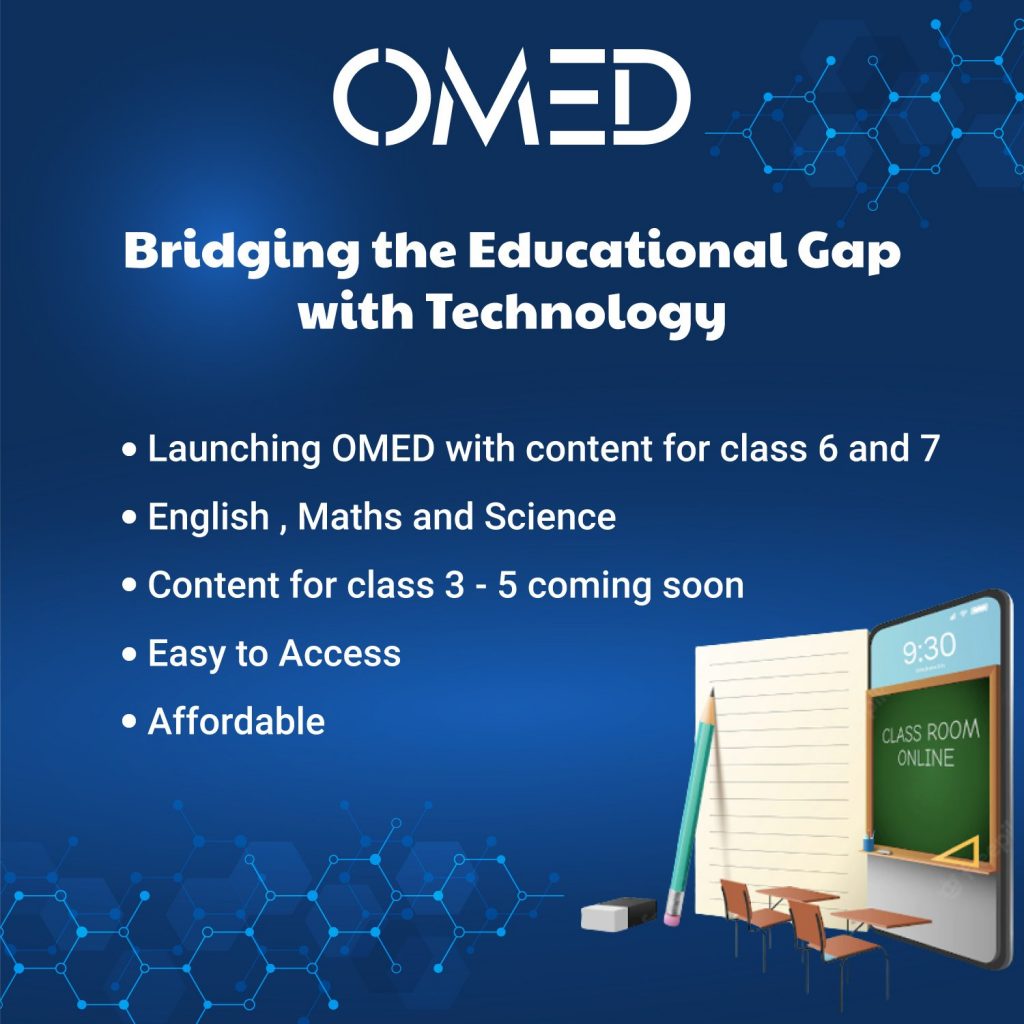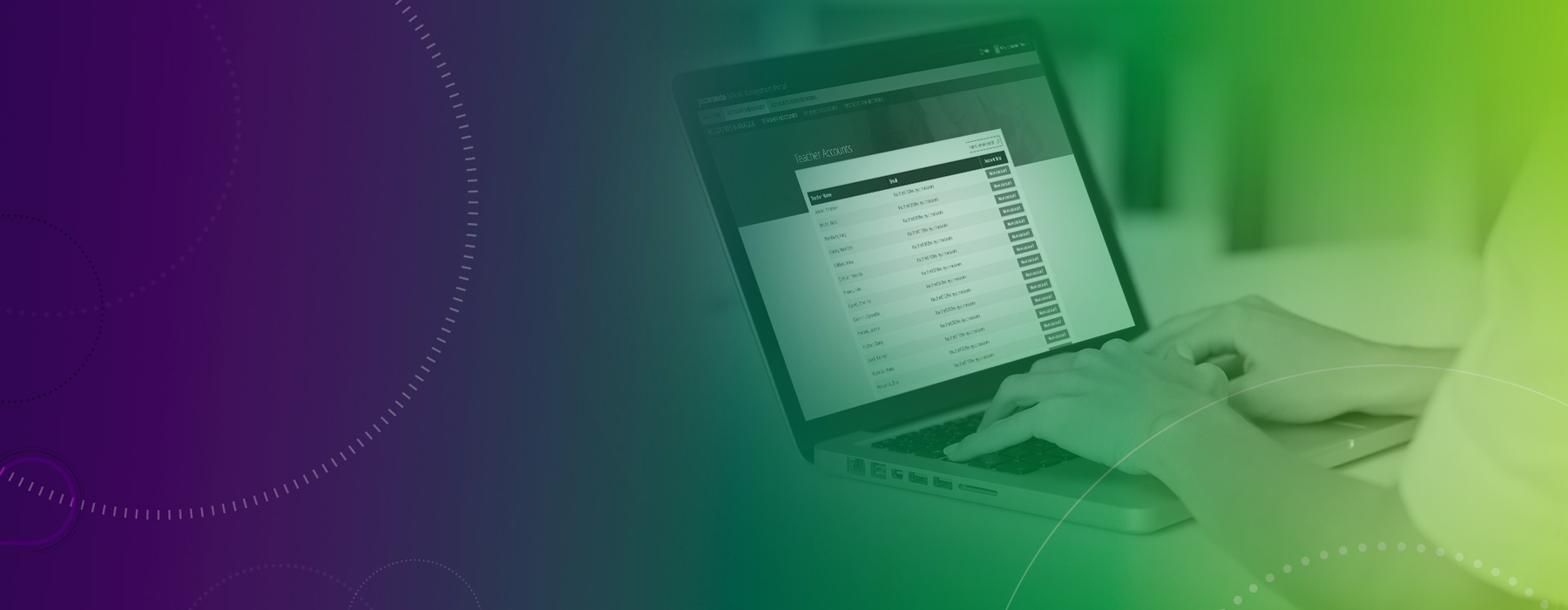“We ourselves feel that what we are doing is just a drop in the ocean. But the ocean would be less without that missing drop” Mother Teresa.

Our dream, or our drop in the ocean, initially conceptualized by my late sister,is the foundation of one of the most interesting ventures I have ever been involved with – an education technology start-up bringing primary and secondary school curriculum online, basically as an e-school. We call it Openminds Education, or OMED.
Just months before she passed away, my sister initiated work on the two elements that she thought would make the most significant contribution to education; first, to provide access via technology and second; to build teaching capacity.
1- The opportunity to improve quality of life
For most people, education leads to opportunities for improving income levels and climbing the social ladder. This occurs more frequently in families with educated children who are able to pull their parents, siblings and sometimes even extended families and communities out of poor socio-economic conditions.
Driven by this knowledge, there is a strong desire for families to invest time and money in their children’s education. This is a basic need which is unlikely to be deterred by recessions or economic uncertainties.
2- Growth in online education
Distance learning, commonly referred to as ‘Edtech’ (in the start-up world), unlike many start-ups in fintech, logistics, transport etc., has a major advantage in that it can help to solve the fundamental problem of lack of quality education for the masses.
Over the last few years, the advent of Covid-19 pandemic fast-tracked the development of distance learning globally and with the tremendous increase in internet access, it is becoming one of the fastest growing sectors in the start-up world.
In countries like Pakistan, mobile connectivity particularly for smartphones is higher than ever before and growing rapidly. According to Pakistan Telecom Authority (PTA) annual report 2021, the number of broadband subscribers in the country is over 100 million and smartphones have overtaken the simpler mobile phones in sales volume.
Cheaper broadband and cellular data pricing will help to enhance the use of these devices into many nontraditional areas. Education may be behind entertainment and shopping, but the bet we are making at OMED is that it is only a matter of time before access to good online content will be seen as a real solution to the education problem.
3- Access to quality content
Access to education is the basic right of every child, as granted in our Constitution and also stipulated in the United Nations’ Millennium Development Goals (MDGs).
We realize that physical schools can never be fully replaced by online education. In an ideal situation, we accept that and we would not want to have our own children only study online. However, the situation on the ground in countries like Pakistan is hardly ideal except for a minority of the population who have the resources.
Research in many developing countries shows that when you cannot afford to build and operate bricks and mortar schools then online availability of content creates access to education which would not be otherwise possible.
IDinsight, a global data and analytics organization, which works with governments and donor programs across many developing countries, notes the following finding in a study about distance learning;
“(Distance Learning) Programs that increase the total amount of time students spend learning through additional instruction or homework tend to improve learning outcomes regardless of technology and design”.
However, it cannot be just about access. Their findings also speak about the quality of the content and teaching;
“Distance learning interventions that displace status quo instruction will only have a positive impact if they deliver more accurate or appropriate content using a pedagogy that is more engaging, personalized, adaptive and/or interactive relative to the status quo”.
4- Teaching Quality needs out of the box solutions
The second part of the equation, about quality of teaching, is equally important and applies to public schools as well as most low-cost private schools, albeit for different reasons.
The public school system is generally acknowledged as broken and as much as we think it can and should be improved, it is a complex matter which needs solutions at the government level. We will not go into this subject here, but suffice it to say that teaching quality in government schools remains poor with low attendance and high drop-out rates seen as a result thereof. With the absence of good quality teaching, there is hardly any incentive for families to keep their children in school.
Pakistan also has a large number of private schools, including low-cost ones, where middle and low-income families strive to send their children. But the teaching at many of these schools also falls short of required standards. The main cause of this phenomenon in private schools has to do with the teachers’ background and education levels and is compounded by the high turnover of female teachers, many of who do not continue with their jobs post marriage.
We know of, and appreciate, the good work several teacher training organizations are doing to address this problem but, in our opinion, trying to solve it physically is a mammoth task.
5- About OMED

At OMED, the central purpose of our work is “to bridge the educational gap with technology”.
OMED provides access to quality education through online content for three vital subjects; Math, Science and English for classes 3 to 7. We have launched the platform with availability of content for classes 6 & 7 and will soon have classes 3 to 5 also covered.
OMED can be accessed directly by students on omed.pk/students or via their schools who have signed up with the platform.
We are mission focused and while we currently have a product in the shape of OMED, we are aware that the product will be iterated several times – it may change form and be in a different shape several years down the road.
But our mission to create access to quality content via technology will remain.
Realizing the challenge of improving quality of teaching via physical teacher training, OMED attempts to solve the problem in another way; It provides complete instruction manuals along with daily lesson plans that teachers can use to improve their teaching.
Schools can also address their teacher turnover issue by ensuring that OMED is utilized by teachers and hence children will be taught via a consistent and standard teaching pedagogy irrespective of the actual classroom teachers.
OMED does not attempt to replace teachers; it augments and supports their work.
In addition, parents can use the teaching tools to help their children after-school and avoid the exorbitant cost of tuitions which most families can ill afford.
Students using the OMED portal will have access to quizzes and exercises that help track their learning. Data showing student attendance and progress will demonstrate if the child is learning at the correct pace.
Schools signing on to OMED will have access to data which compares them to schools’ and teachers’ universe on the platform, helping them improve performance on an ongoing basis.
Finally, it is a critical part of our mission to keep education affordable. Although we have studied models to keep OMED free of cost for the needy, we currently don’t have this option for sustainability reasons. Therefore, we have decided to launch at a minimal price point – keeping it well below fees charged by low-cost schools and tuitions. We hope this will encourage schools and families to come to the platform and use it without worrying much about the cost.
6- Many drops in the ocean are needed
We know that this is but a drop in the ocean. The hope is that this drop creates ripples that spread far and wide and inspire a large number of entrepreneurs and organizations to contribute to making our dream of providing access to quality education for all – a reality.
Author : Asif Saad – Director LearnTech Group of Companies

